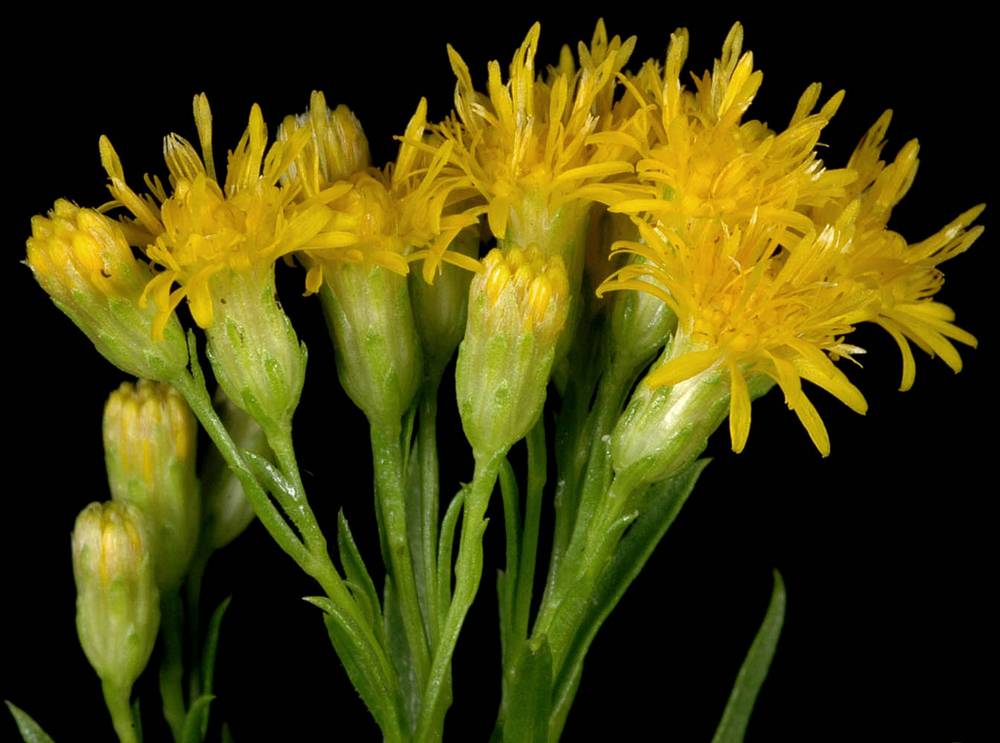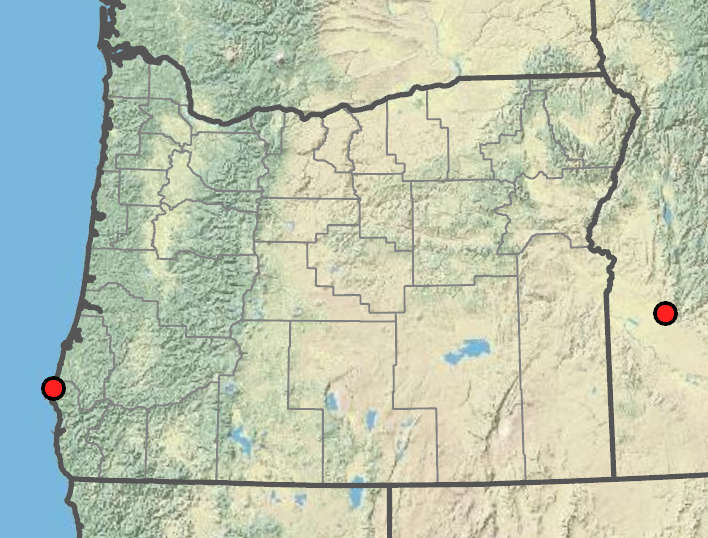Euthamia graminifolia
Euthamia
flat-top goldentop
goldentop
usually 1; erect;
branches few to many, sometimes woody proximally; leafy throughout, glabrous.
cauline, alternate, slightly reduced distally, sometimes with tufts of linear leaves on short axillary branches;
blades narrowly elliptic-lanceolate to linear;
margins entire;
veins 3–5; parallel from bases;
tips acute or acuminate;
surfaces glabrous; ± glandular-punctate, sessile.
numerous small heads clustered on branch tips in panicle-like arrays, sometimes ± flat-topped.
cylindrical or narrowly campanulate.
convex;
paleae 0.
pistillate;
rays exceeding involucres, yellow.
bisexual;
corollas cylindric, widened in distal half, yellow;
lobes 5, narrowly triangular, spreading to recurved at anthesis;
stamens 5; well exserted from corollas;
stigmas exserted from stamen tubes.
in 4–6 unequal series; erect, spreading in fruit, narrowly lanceolate or linear; outer gradually shorter; colorless or green-tipped; outermost often green throughout; midribs indistinct;
surfaces glabrous, resinous.
cylindrical, truncate, tapering to bases, inconspicuously ribbed, pappi of numerous fine bristles.
radiate.
Euthamia graminifolia
Euthamia
Asia, Europe, North America. 5 species; 1 species treated in Flora.
Euthamia graminifolia has been recorded in Oregon as an adventive species in cranberry bogs in Curry County. Its native range is to the north and east of Oregon, extending from Washington through Canada, to the central and eastern United States. The specimens collected in Oregon resemble E. graminifolia in the shape of their inflorescences and involucral phyllaries. However, the specimens do not have the kind of robust growth needed in order to rule out environmental variation in E. occidentalis as the source of these traits.
Kenton Chambers
- Local floras:
BC,
OR,
WA
- Local Web sites:
Flora NW,
PNW Herbaria
WildflowerSearch
iNaturalist (observations)
USDA Plants Database
- LBJ Wildflower Center
- SEINet
- Plants of the World Online
- Encyclopedia of Life
- Wikipedia
- Google Image Search



